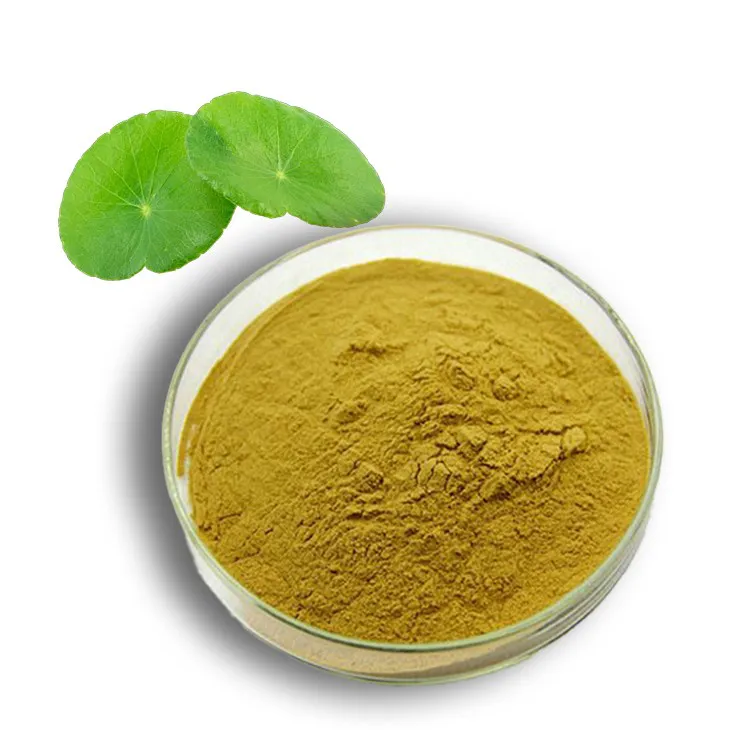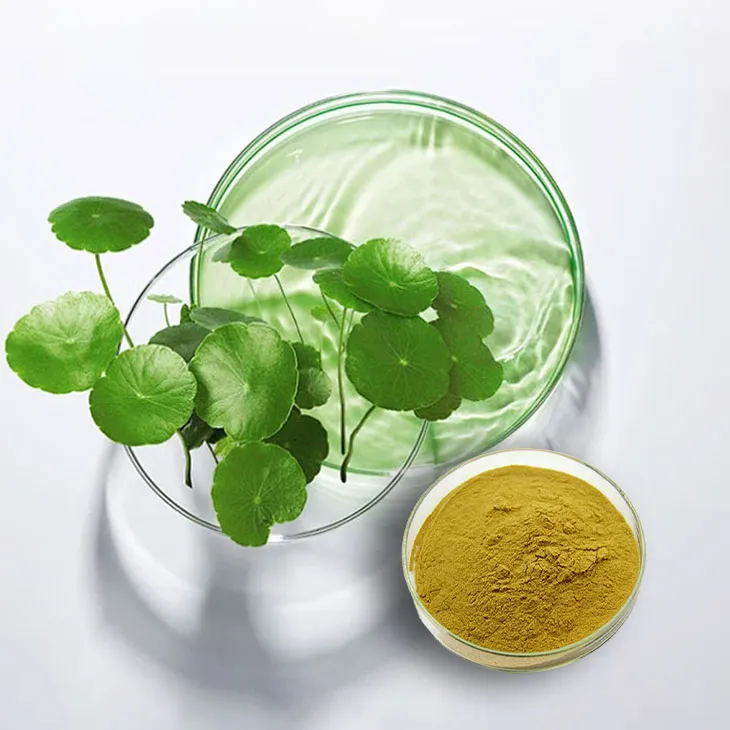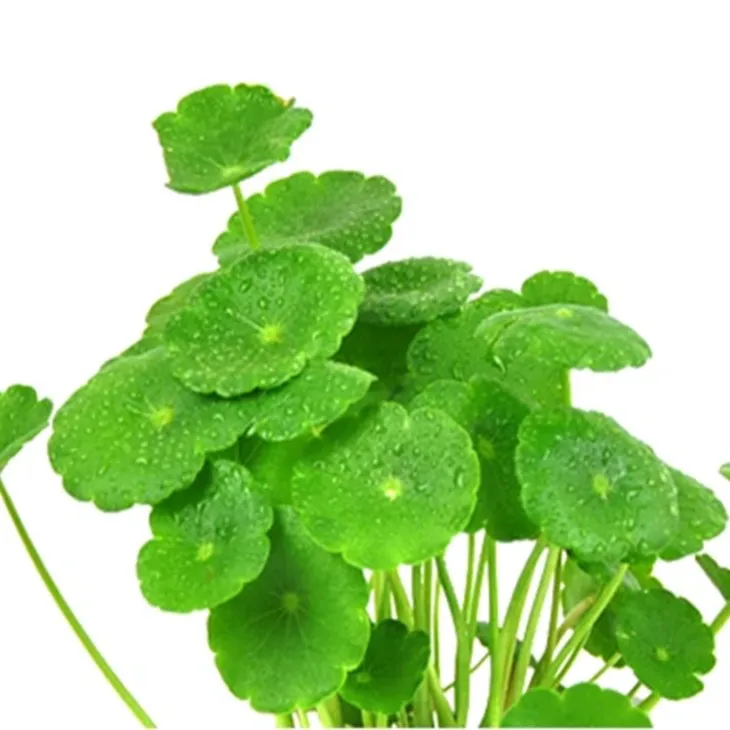- 0086-571-85302990
- sales@greenskybio.com
Best Types of Centella Asiatica Extract: A Guide to Selecting the Best Centella Asiatica Extract
2024-11-12

Introduction
Centella asiatica, commonly known as gotu kola, has been used in traditional medicine systems for centuries. It is native to Asia, Australia, and Africa and is renowned for its potential health benefits. The extract of centella asiatica is available in various forms in the market today. However, not all extracts are created equal. In this guide, we will explore the different types of Centella Asiatica Extracts, considering factors such as chemical composition, manufacturing process, and consumer reviews to help you make an informed choice.

Chemical Composition of Centella Asiatica
Centella asiatica contains several bioactive compounds that contribute to its health - promoting properties.
Triterpenoids
Triterpenoids, such as asiaticoside, madecassoside, asiatic acid, and madecassic acid, are some of the most important components in centella asiatica. Asiaticoside has been studied for its wound - healing properties. It is believed to stimulate collagen synthesis, which is crucial for skin repair. Madecassoside also has similar effects and is thought to have anti - inflammatory properties as well. Asiatic acid and madecassic acid are involved in antioxidant activities, helping to protect the body's cells from oxidative damage.
Flavonoids
Centella asiatica also contains flavonoids. These compounds are known for their antioxidant and anti - inflammatory properties. Flavonoids in centella asiatica may contribute to its overall health benefits, such as improving blood circulation and reducing inflammation in the body.

Types of Centella Asiatica Extracts
Standardized Extracts
Standardized extracts are processed to contain a specific amount of certain bioactive compounds. For example, a standardized Centella Asiatica Extract may be formulated to contain a fixed percentage of asiaticoside. The advantage of these extracts is that they offer a more consistent and predictable dose of the active ingredients. This is especially important for those who are using centella asiatica for specific health conditions, such as skin disorders or wound healing.
Whole - Plant Extracts
Whole - plant extracts contain all the components present in the centella asiatica plant. This includes not only the triterpenoids and flavonoids but also other substances such as polysaccharides and minerals. The theory behind whole - plant extracts is that all the components work together synergistically to produce the overall health benefits. Some people believe that the combination of all these substances may provide a more comprehensive effect compared to just isolated bioactive compounds.
Organic Extracts
Organic extracts are made from centella asiatica plants that are grown without the use of synthetic pesticides, fertilizers, or other chemicals. The advantage of organic extracts is that they are free from potential chemical contaminants. For those who are concerned about the quality and purity of the products they consume, organic centella asiatica extracts can be a good choice. Additionally, some consumers believe that organic plants may have a higher nutritional value due to the natural growing conditions.

Manufacturing Process
Solvent - Extraction
One common method of extracting centella asiatica is solvent - extraction. In this process, solvents such as ethanol or water are used to dissolve the bioactive compounds from the plant material. Ethanol - based extracts are often more effective in extracting lipophilic compounds like triterpenoids. However, the choice of solvent can also affect the final composition of the extract. For example, water - based extracts may contain more water - soluble compounds such as polysaccharides.
Supercritical Fluid Extraction
Supercritical fluid extraction is a more advanced technique. It uses supercritical fluids, usually carbon dioxide, to extract the bioactive compounds. This method has several advantages. Firstly, it is a relatively clean process as carbon dioxide is a non - toxic and non - flammable gas. Secondly, it can produce extracts with a high purity and a more intact chemical composition compared to solvent - extraction methods. However, supercritical fluid extraction equipment is more expensive, which can lead to higher - cost products.
Consumer Reviews and Considerations
Efficacy for Specific Health Conditions
When looking at consumer reviews, it is important to consider the efficacy of centella asiatica extract for specific health conditions. For skin health, many users report positive results with centella asiatica extracts. They claim that it helps in reducing acne scars, improving skin elasticity, and promoting wound healing. For cognitive function, some users believe that it can improve memory and concentration, although scientific evidence for this is still limited. However, individual responses may vary, and it is important to consult a healthcare provider before using centella asiatica extract for any specific health condition.
Taste and Form of the Product
The taste and form of centella asiatica extract products can also influence consumer satisfaction. Extracts are available in various forms such as capsules, tablets, tinctures, and powders. Capsules and tablets are convenient for those who do not like the taste of the extract. Tinctures may have a stronger taste but are often more easily absorbed. Powders can be added to food or drinks but may have a distinct flavor. Some consumers prefer natural - tasting products, while others are more concerned with the convenience of consumption.
Price and Value for Money
Price is an important factor for many consumers. Standardized extracts and those produced using more advanced extraction methods such as supercritical fluid extraction tend to be more expensive. However, they may also offer higher quality and more consistent results. When considering the price, it is important to also look at the value for money. A more expensive product may be worth the investment if it provides better results in terms of health benefits. On the other hand, some less expensive whole - plant extracts may also be effective for general health maintenance.
Conclusion
In conclusion, choosing the best centella asiatica extract depends on several factors. The chemical composition, whether it is a standardized extract, whole - plant extract, or organic extract, plays a role in determining its potential health benefits. The manufacturing process, such as solvent - extraction or supercritical fluid extraction, can affect the quality and purity of the extract. Additionally, consumer reviews regarding efficacy for specific health conditions, taste and form of the product, and price and value for money are all important considerations. By taking all these factors into account, you can make a more informed choice when selecting a centella asiatica extract that suits your needs.
FAQ:
What are the main chemical components in Centella Asiatica extract?
Centella Asiatica extract mainly contains triterpenoids, such as asiaticoside, madecassoside, asiatic acid, and madecassic acid. These components are often associated with the various health benefits attributed to the extract, like antioxidant, anti - inflammatory, and wound - healing properties.
How does the manufacturing process affect the quality of Centella Asiatica extract?
The manufacturing process can significantly impact the quality of Centella Asiatica extract. For example, improper extraction methods may lead to a lower yield of active components. High - quality extraction usually involves precise control of factors like temperature, solvent type, and extraction time. If the process is not well - managed, impurities may be introduced, or the active compounds may be degraded, reducing the overall efficacy of the extract.
Are there any side effects of using Centella Asiatica extract?
While Centella Asiatica extract is generally considered safe for most people when used appropriately, some individuals may experience side effects. These can include allergic reactions, especially in those with a known sensitivity to plants in the Apiaceae family. In some cases, excessive use may lead to gastrointestinal discomfort, such as nausea or diarrhea. It's important to follow recommended dosages and consult a healthcare professional if you have any underlying health conditions.
How can consumer reviews help in choosing the best Centella Asiatica extract?
Consumer reviews can provide valuable insights into the effectiveness and quality of different Centella Asiatica extracts. They can offer real - world experiences regarding factors like taste, ease of use, and most importantly, the perceived health benefits. Positive reviews may indicate a reliable product with consistent results, while negative reviews might highlight potential issues such as ineffectiveness, poor quality control, or adverse reactions. However, it's important to consider that individual experiences can vary, and reviews should be used as one of several factors in the decision - making process.
What are the different forms of Centella Asiatica extract available in the market?
Centella Asiatica extract is available in various forms in the market. These include capsules, tablets, tinctures, and creams. Capsules and tablets are convenient for oral consumption and are often used for internal health benefits. Tinctures are liquid extracts that can be taken orally or used topically. Creams are mainly used for topical application, particularly for skin - related benefits such as wound healing, reducing inflammation, and improving skin texture.
Related literature
- The Chemical Constituents and Pharmacological Activities of Centella Asiatica"
- "Centella Asiatica Extract: Manufacturing Techniques and Quality Control"
- "Consumer Perception and Acceptance of Centella Asiatica - Based Products"
- ▶ Hesperidin
- ▶ citrus bioflavonoids
- ▶ plant extract
- ▶ lycopene
- ▶ Diosmin
- ▶ Grape seed extract
- ▶ Sea buckthorn Juice Powder
- ▶ Beetroot powder
- ▶ Hops Extract
- ▶ Artichoke Extract
- ▶ Reishi mushroom extract
- ▶ Astaxanthin
- ▶ Green Tea Extract
- ▶ Curcumin Extract
- ▶ Horse Chestnut Extract
- ▶ Other Problems
- ▶ Boswellia Serrata Extract
- ▶ Resveratrol Extract
- ▶ Marigold Extract
- ▶ Grape Leaf Extract
- ▶ blog3
-
High purity olive leaf extract
2024-11-12
-
Lavender oil extraction method
2024-11-12
-
100% organic virgin sea buckthorn fruit oil
2024-11-12
-
Lotus leaf extract powder factory in China
2024-11-12
-
China aged garlic extract supplier
2024-11-12
-
Deer antler extract powder manufacturer
2024-11-12
-
Saw palmetto extract vs whole herb
2024-11-12
-
Curcuma Longa Extract
2024-11-12
-
Horse Chestnut Extract
2024-11-12
-
Ginger Extract
2024-11-12
-
Red Date Extract
2024-11-12
-
Grape Seed Extract
2024-11-12
-
Giant Knotweed Extract
2024-11-12
-
Polygonum Cuspidatum Extract
2024-11-12
-
Scutellaria Extract
2024-11-12
-
Jujube Extract
2024-11-12
-
Licorice Root Extract Powder
2024-11-12





















